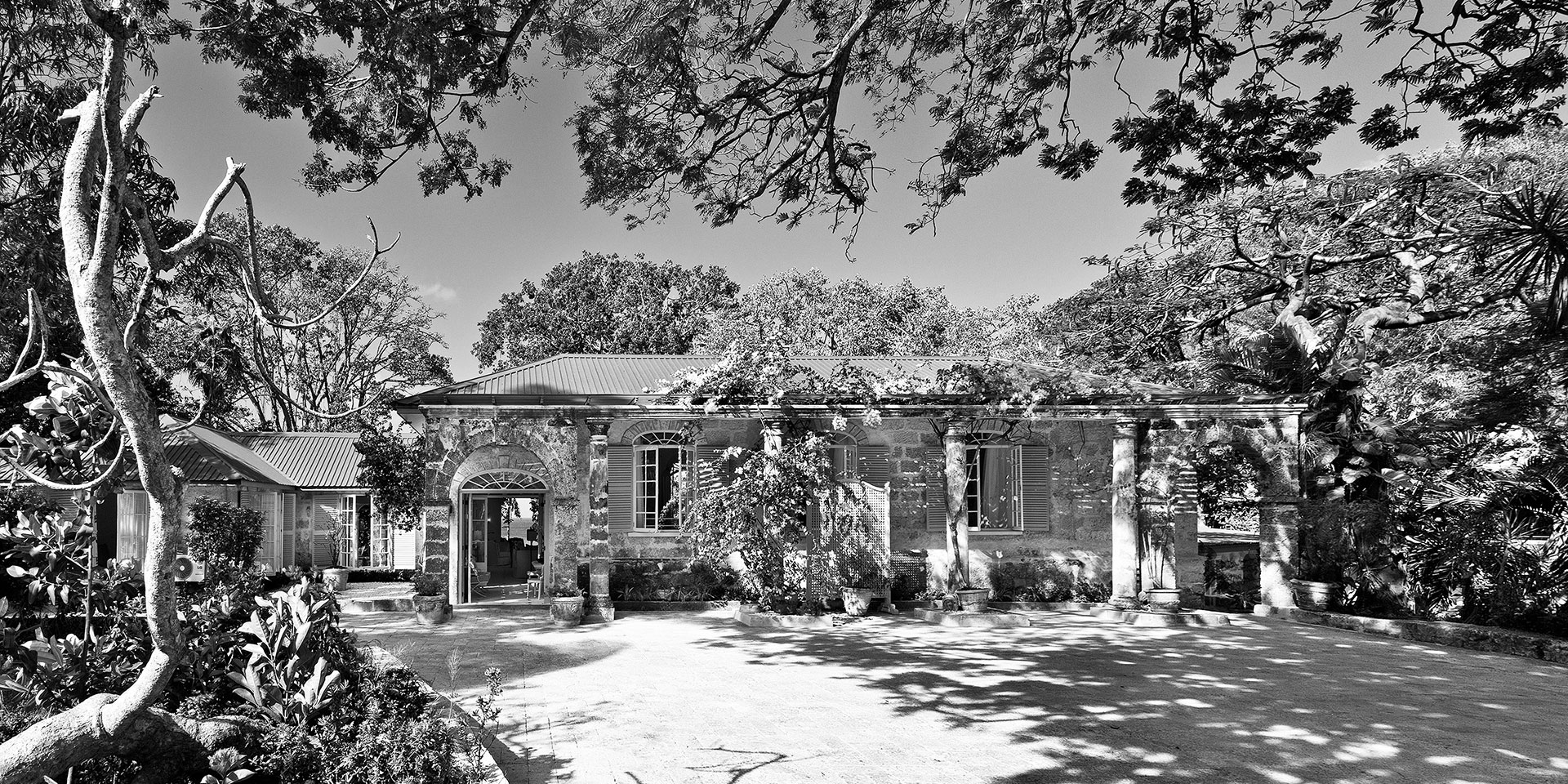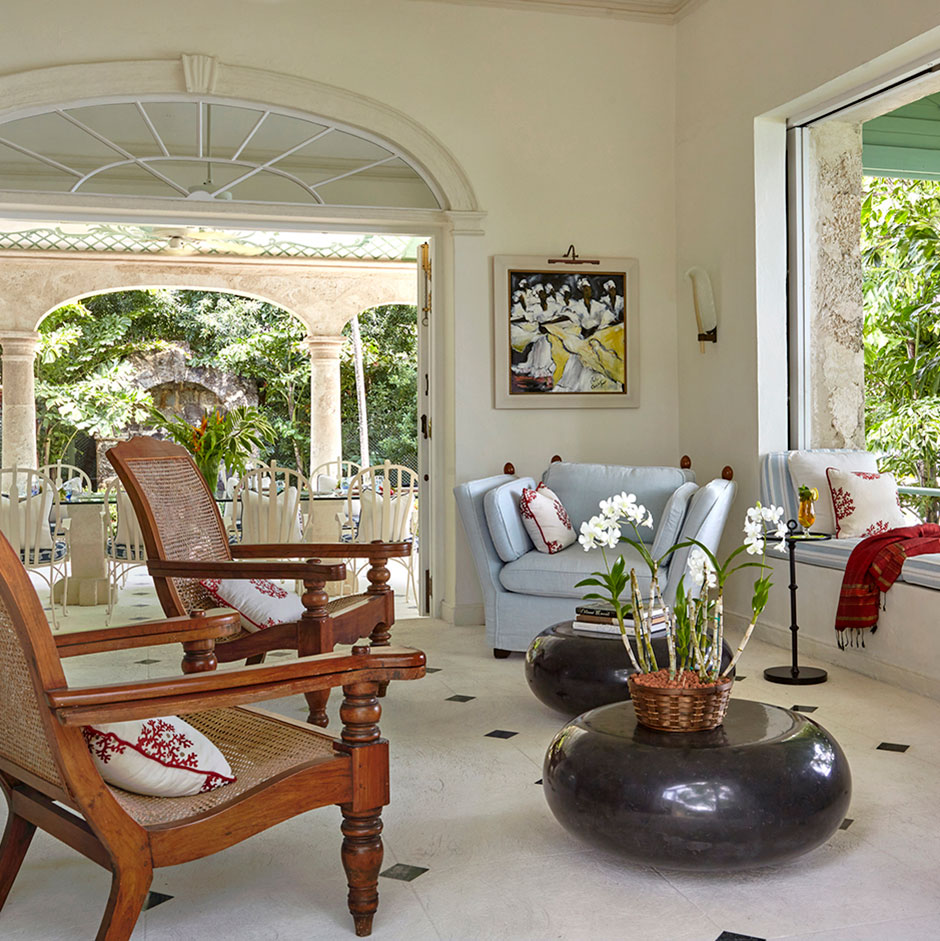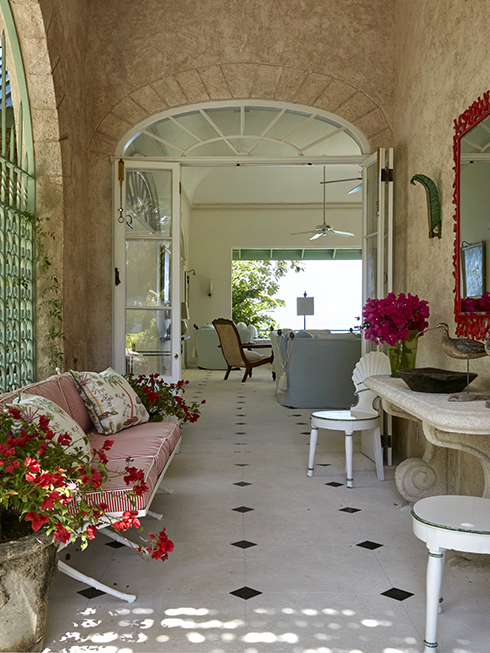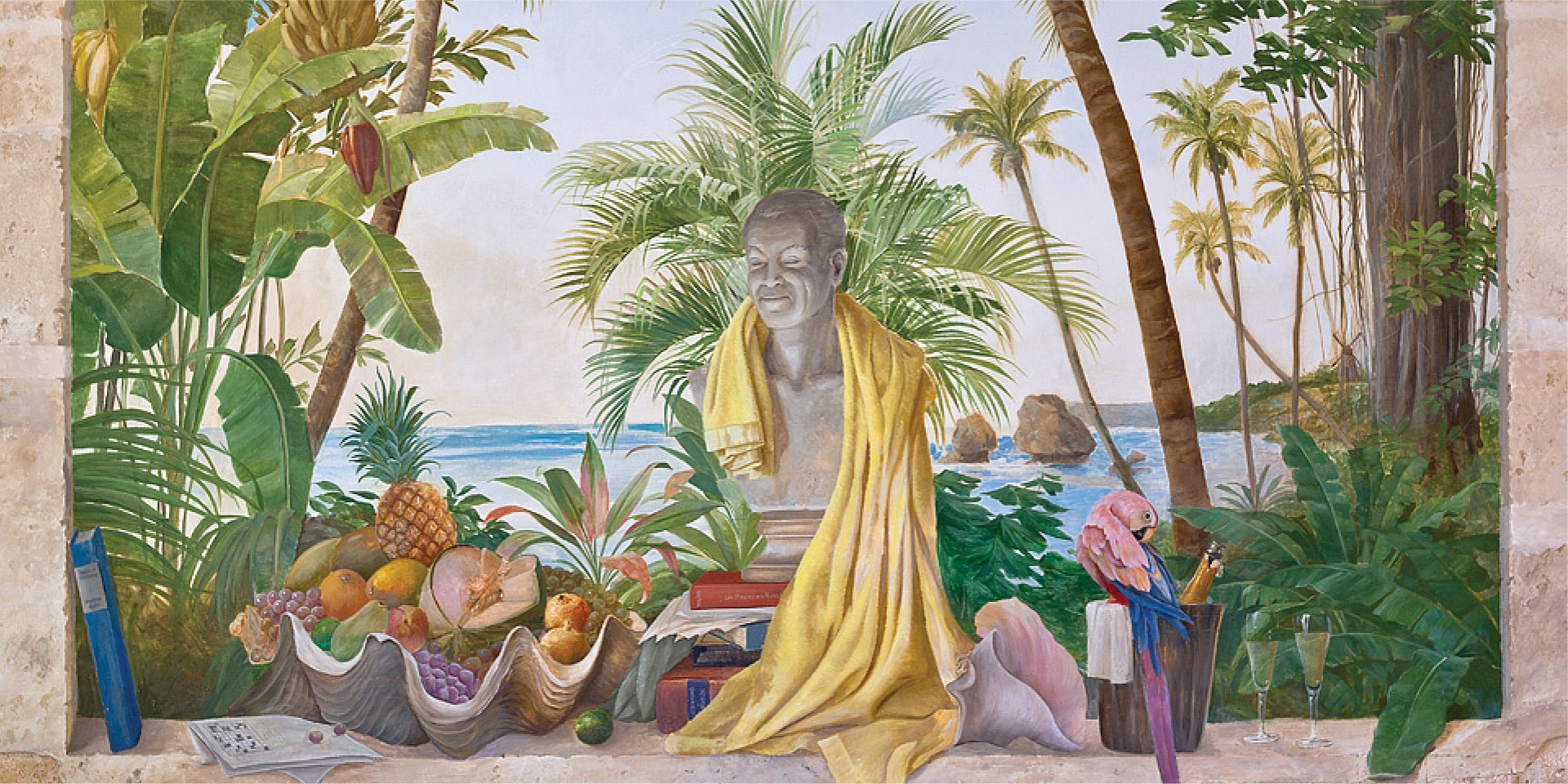
our history



making of a masterpiece
Built in the 1940’s, Crystal Springs was meticulously redesigned in the 1960’s by Oliver Messel, who after establishing an award-winning career in stage, film and costume design, turned his hand to architecture with considerable renown both in Barbados and the nearby island of Mustique. His theatrical style incorporated luxurious furnishings and hand-painted finishes to create stunning backdrops that were impressive yet approachable, creating holiday homes that could truly be lived in. Messel’s floor plans emphasized expansive outdoor living space, taking full advantage of the beautiful tropical environs, from breezy sunny days to starlit evenings.
Crystal Springs’ magical ambiance attracted the current owners nearly 30 years ago; that first holiday was the beginning of a love affair that found them returning year after year, creating countless family memories. After purchasing the home in 2013, they lovingly restored Crystal Springs with reverence to the original splendour of Messel’s design. Paying homage to Crystal Spring’s significance as one of Messel’s most stunning architectural masterpieces, they’ve preserved his unique architectural elements, and even his signature Messel Green color in the design palette, revitalizing the villa’s spirit as Messel originally envisioned.
The team involved in the restoration was almost entirely Barbadian; local experts, artisans and craftsmen ensured the home’s historic integrity was maintained, and the few new additions blend effortlessly with the original structures. The interiors have been beautifully refurbished; most of the home’s original furnishings artfully combine with specially commissioned local artwork, creating a sophisticated take on Caribbean style.
“One of Oliver Messel’s finest properties, Crystal Springs is an indelible part of Barbadian architectural history. A testament to tradition’s contemporary relevance; its spirit has been revitalized for the enjoyment of generations to come.”

Oliver Messel
Oliver Messel, celebrated as the premier British stage and costume designer of the 20th century, enjoyed a distinguished career that extended beyond the theatre to painting, interior design and architecture. His work, characterized by romance, whimsy and charm, has a dedicated following that ensures its preservation, most significantly in the incredible homes he created in the West Indies.
Born in 1904 in London, Oliver was the third child of Leonard and Maud Messel. His parents enjoyed a heritage of artistic talent which they shared with Oliver and his siblings; they were surrounded by artists, connoisseurs and scholars from an early age. Maud was a very artistic woman; she had an innate knowledge of interior design and horticulture, transforming their family home with such creative flair that it no doubt influenced Oliver’s later success in architectural renovation.
Theatre and Film
At 17, Oliver decided he would be an artist; he was inspired by the great Italian Renaissance masters and spent time visiting and learning from theatre designers, dressmakers and other craftsmen. Oliver was encouraged by family friends to leave Eton to attend the Slade School of Fine Art in London, where he studied under the tutelage of Professor Henry Tonks. At Slade, Oliver first created his papier-maché masks, which he exhibited at the Claridge Gallery in 1924. The exposure received by this exhibit ultimately led to Oliver’s illustrious career in the theatre; he worked on productions with Georges Braque, Noël Coward, Cole Porter and other renowned producers, mastering stage and costume design for drama, opera, ballet, musicals and revue.
Messel also designed sets and costumes for eight films throughout his career, highlighting his attention to detail, period research and creative whimsy. He worked with such stars as John Barrymore, Vivian Leigh, Katharine Hepburn, Elizabeth Taylor, Montgomery Clift and Douglas Fairbanks.
Interior Design and Architecture
Oliver’s innovative stage designs influenced interior designers of the time, and and he ultimately made a relatively easy shift himself, working on murals and rich interiors for hotels, shops and theatres as well as formal party decor for balls and receptions in both London and New York.
Oliver began suffering from terrible arthritis, leading him to spend increasing amounts of time in the West Indies. He first visited Barbados in the 1950s as a guest of architect and developer, Victor Marson, and subsequently purchased his own home, Maddox House, in 1964. Oliver’s transformation of the derelict seaside plantation was so exquisitely executed that it led a second career shift into architecture; over the next decade Oliver built or renovated 26 houses in both Barbados and the nearby Vincentian island of Mustique.
The Messel Style
His theatrical style emphasized blended ‘indoor-outdoor living’ space, taking full advantage of the beautiful tropical environs and the region’s innate character and charm. Oliver loved bringing the outdoors in, with a real genius for combining house, gardens and landscape through innovative use of lighting, architectural elements and nature. His designs incorporate elliptical archways, jalousie shutters and dramatic picture windows to frame stunning views out to the gardens and Caribbean Sea, which he felt were so important to the enjoyment of the homes.
Oliver used many recurring elements in his architectural designs, including his signature colour, a light sage affectionately known as ‘Messel Green’. The muted shade softens the transition between the elegant rooms and lush gardens, creating an easy flow between the interior and outdoor living spaces.
History adapted from Oliver Messel: In the Theatre of Design, edited by Thomas Messel.
